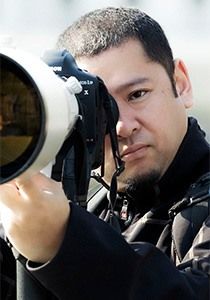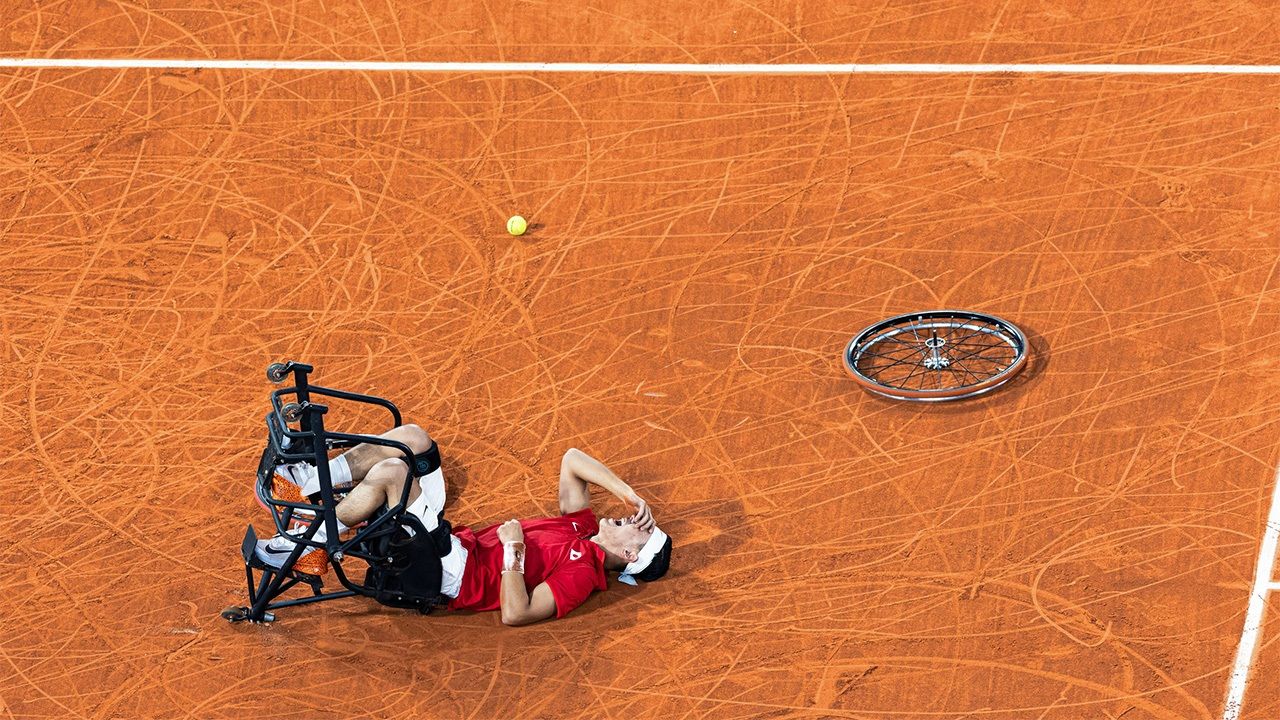
Liberty, Equality, and Fraternity at the Paris 2024 Paralympic Games
Sports World Health- English
- 日本語
- 简体字
- 繁體字
- Français
- Español
- العربية
- Русский
A Completely New Level of Games
At a press conference prior to the closing ceremony of the Paris 2024 Paralympic Games, International Paralympic Committee President Andrew Parsons stated: “Quite simply, Paris 2024 is the new benchmark for the Paralympic Games in every aspect, in every single point of the organization.” It is easy to understand his praise for the event.
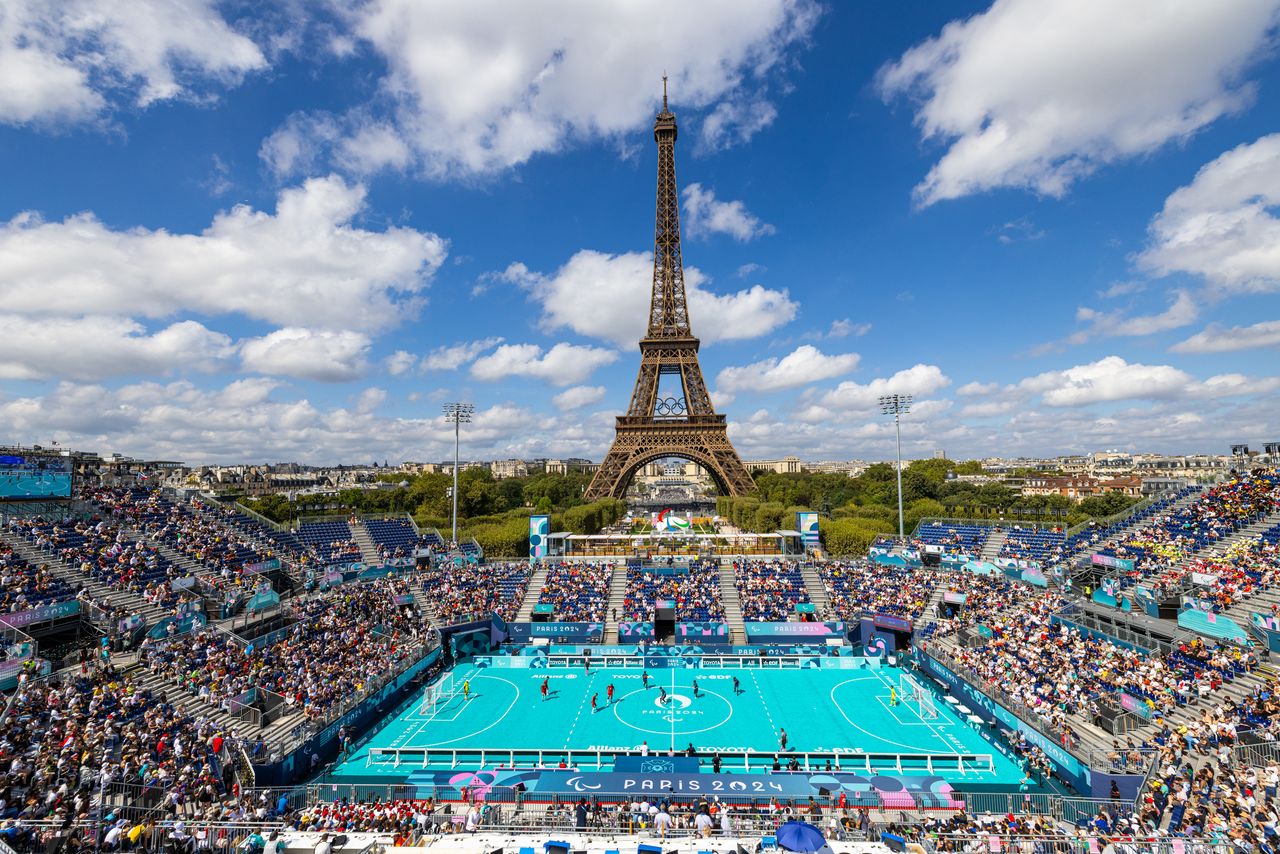
The Paris Paralympic Games enticed a large contingent of spectators. A view of the venue where blind football (soccer) was staged, close to the Eiffel Tower. (© Ochi Takao)
Paris “lacked” one thing, following the lead of London and Tokyo: detailed explanations of disability class divisions. In terms of art appreciation, it is akin to viewing and enjoying artworks without the distraction of descriptive labels.
The large number of spectators enjoyed the contests, and there was a palpable sense of respect for the athletes’ performance. Paris also gained attention for eliminating the distinction between able-bodied athletes and those with disabilities.
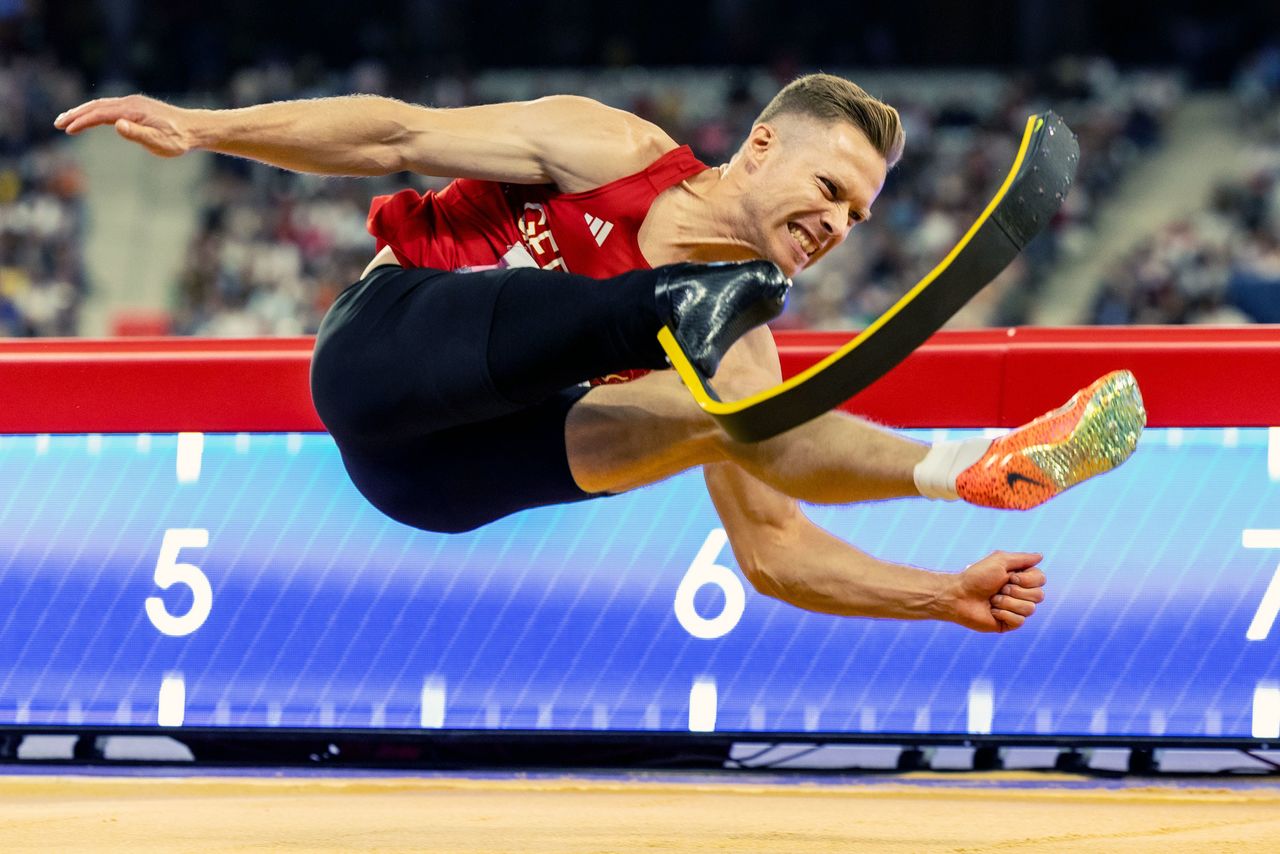
German Paralympic athlete Markus Rehm won the men’s long jump for the fourth consecutive Games. (© Ochi Takao)
Impressions from the Innumerable Wheel Tracks
Wheelchair tennis was held at Roland Garros Stadium, on the same red clay courts used for the renowned French Open. I was eager to see how I could photograph the tracks made by the players’ wheelchairs.
The gold-medal men’s singles match was a contest between Japan’s Oda Tokito and Great Britain’s Alfie Hewett. For the event, I deliberately chose upper-level seating, away from the photographers’ area alongside the court, to gain a better view of the wheel tracks.
Oda managed to overcome the world’s number-one player to secure gold. At the end of the match he collapsed onto the clay court, triggering explosive applause. I was lost in the moment as I clicked away, trying to capture my ideal shot.
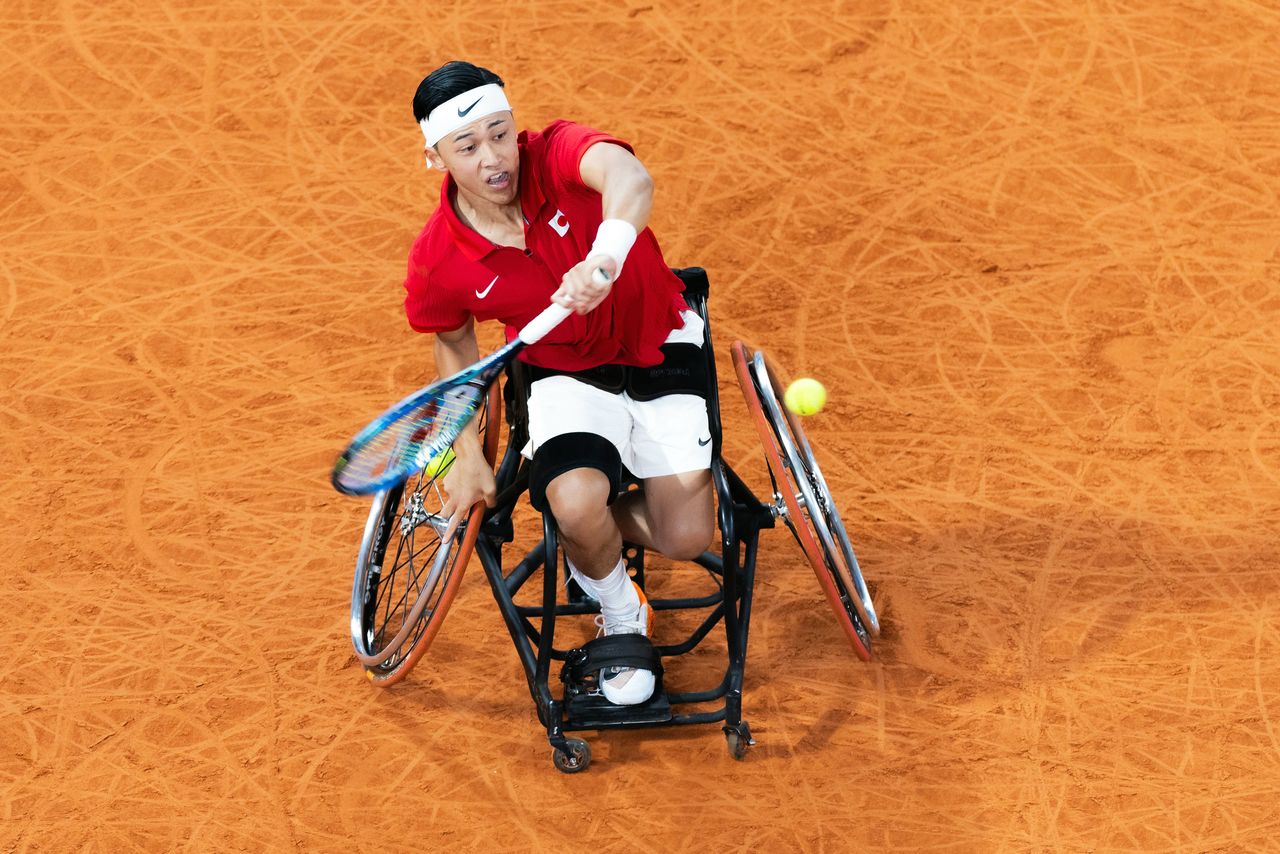
Oda Tokito competing in the final match of the wheelchair tennis men’s singles competition on September 7, 2024. (© Ochi Takao)
But when I examined my photographs after the event, I realized my framing was based on a misconception.
My plan was to take advantage of the track marks on the clay court to abstractly express the path taken by para-athletes in overcoming struggles, but in fact, what I captured was the evidence of the fierce battle they fought on that day.
Nobody watching this historic match saw it through the lens of “disabled sports.” I realized the era when we no longer treat Olympians and Paralympians differently had arrived.
Sydney: Unwarranted Concerns
Reflecting on my experiences at previous events, the path that led to the Paris Games came into focus.
The first time I attended Paralympic Games was 24 years ago, in Sydney, where I was astonished at the enthusiasm of the crowd. The reason for my surprise was simple: up until that point, I had felt pity toward people with disabilities. I felt reluctant to point my camera at them.
During the opening ceremony, I saw an athlete who was missing both legs do a one-handed handstand while waving with the other hand. Others were jumping on prosthetic limbs, or running without sight, while wheelchair basketball and rugby players crashed into one another as fireworks lit the skies. I had been convinced there would be a mood of pity, but this spectacle was nothing of the sort.
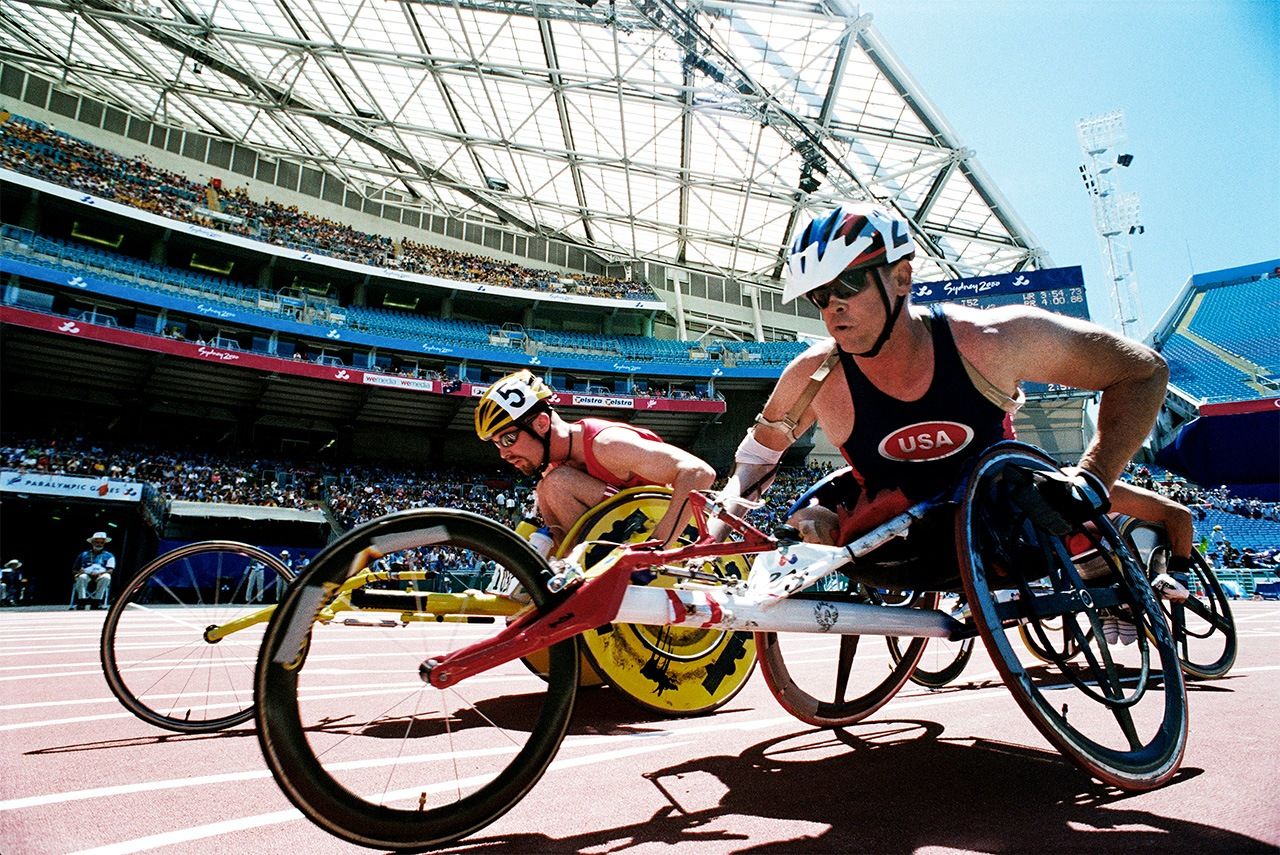
The men’s wheelchair 1,500-meter race at the Sydney 2000 Paralympic Games. The crowd erupted in boisterous cheering. (© Ochi Takao)
In Paris, there was little hint of the outdated perceptions once associated with disability: The whole city was jubilant about the Paralympic Games.
The Paris Games achieved a new degree of unity between the two competitions. Para-athletes have evolved along with their equipment, and the level of competition has also intensified. The Olympic and Paralympic Games shared a common emblem, one combining three symbols: the gold medal, the flame and Marianne, the personification of the French Republic. ID cards for athletes, staff, media, and so on featured this together with the five Olympic rings logo and three curved strokes, the agitos (from Latin, meaning “I move”) of the Paralympic logo. This was common across all official items, even down to the smallest pieces of equipment, removing any need to switch over between the two competitions.
London: A Games to Simply Enjoy
The Beijing Games, in 2008, felt as though a major transformation had taken place, with the seating at full capacity for all events. Then in London, in 2012, the British media shone a spotlight on elite para athletes, and events were broadcast on the public network. The Paralympics had attained value as sporting entertainment in its own right, in the city to which they trace their history back to London’s Stoke Mandeville games of 1948. There was even a scramble to secure tickets.
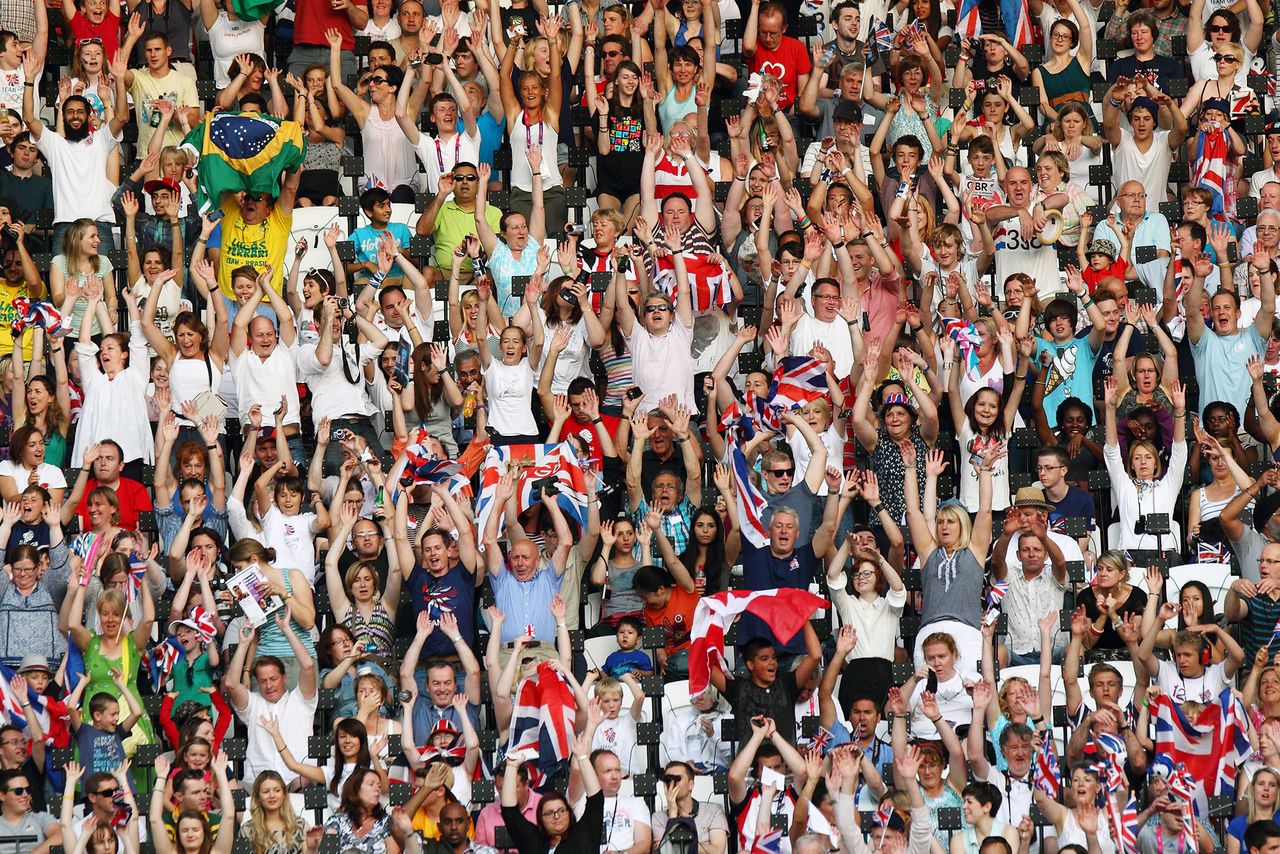
Spectators cheering at the 2012 London athletics stadium. A record 2.7 million tickets were sold for the Paralympic Games alone. (© Ochi Takao)
In Rio, the crowd’s enthusiasm was equally impressive in 2016. The Games received daily coverage in Japan, in anticipation of the 2020 Tokyo Games.
The Paralympic Games has evolved into a major international sporting event. Crowds of spectators filled all of the venues in Paris, with 2.5 million tickets sold. A new record was set in Paris for the total number of tickets sold for the two competitions. In breaks between contests, the crowds sang along to “Les Champs-Élysées.” From the pure excitement that filled the stadiums, it was clear that people no longer distinguished between the Olympic and Paralympic Games.
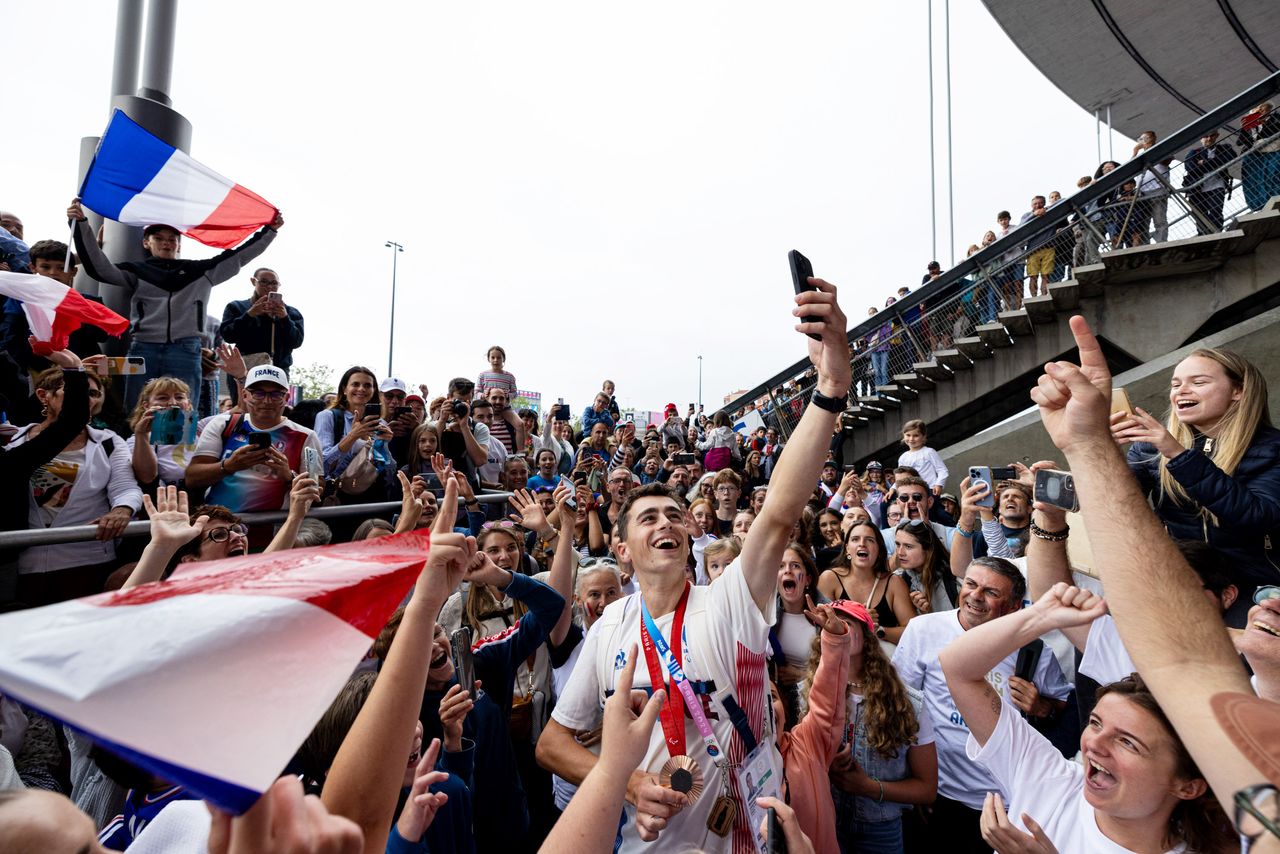
France’s Antoine Praud came into the stands to celebrate his 1,500-meter bronze medal with family and was surrounded by fans, while the crowd sang “Les Champs-Élysées.” (© Ochi Takao)
They were equally delighted by the spectacle of the Paralympics, with no qualms about the athletes’ disabilities. Things will never return to the way they were: if anything, the transformation will accelerate.
Athletes Go from Strength to Strength, also at the Tokyo Games
The 2020 Tokyo Games were delayed until 2021 due to the COVID-19 pandemic, and were staged without spectators. Had this not been the case, the Games would no doubt have shared the appeal of parasports with a wider audience.
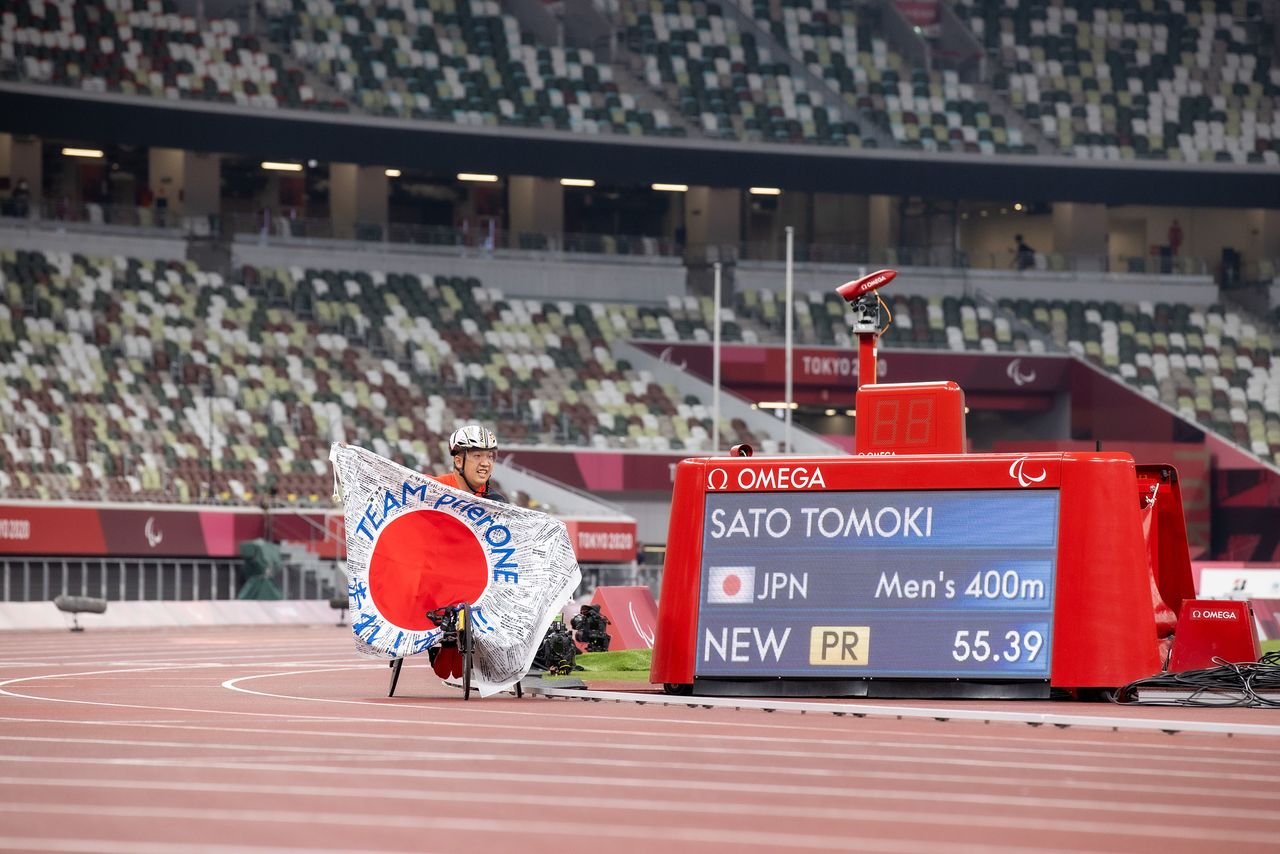
The men’s 400-meter event at the Tokyo Paralympic Games, held without spectators. Satō Tomoki won the gold medal and set a new Paralympic Games record. A significant legacy of the Tokyo Games was the treatment of the Olympic and Paralympic Games as counterparts even from the bidding stage. (© Ochi Takao)
Japan has seen its para-athletes grow stronger. In 2019, the Indoor Training Center East, used by para-athletes, was established alongside the National Training Center in Kita, Tokyo. It provides a base for discovering new athletes and for training coaches.
More athletes are receiving national and corporate sponsorship, with some becoming professional or semiprofessional. The Japanese Paralympic team won 13 gold medals in Tokyo, and 14 in Paris.
Ensuring that the Movement Takes Root
Still, many issues remain.
Para-athletes often require costly equipment, including wheelchairs and prosthetic limbs. The Paris Games saw 168 teams compete, including the Refugee Team, but there were noticeably fewer athletes from developing nations.
Paris itself lacked accessible infrastructure, particularly its sidewalks and subways, making it difficult to navigate in a wheelchair.
Japan’s elite athletes received strong support, but there is still insufficient awareness in regional areas and at schools. Some gymnasiums refuse to allow wheelchair athletes to use their facilities.
We must create an environment where sport can be enjoyed by anybody. Furthermore, sport can be a means to boost social integration of people with disabilities. The Paralympic Games were initially intended for this purpose. There are many tasks ahead other than simply earning more medals. Even medal-winning athletes expressed this concern at press conferences.
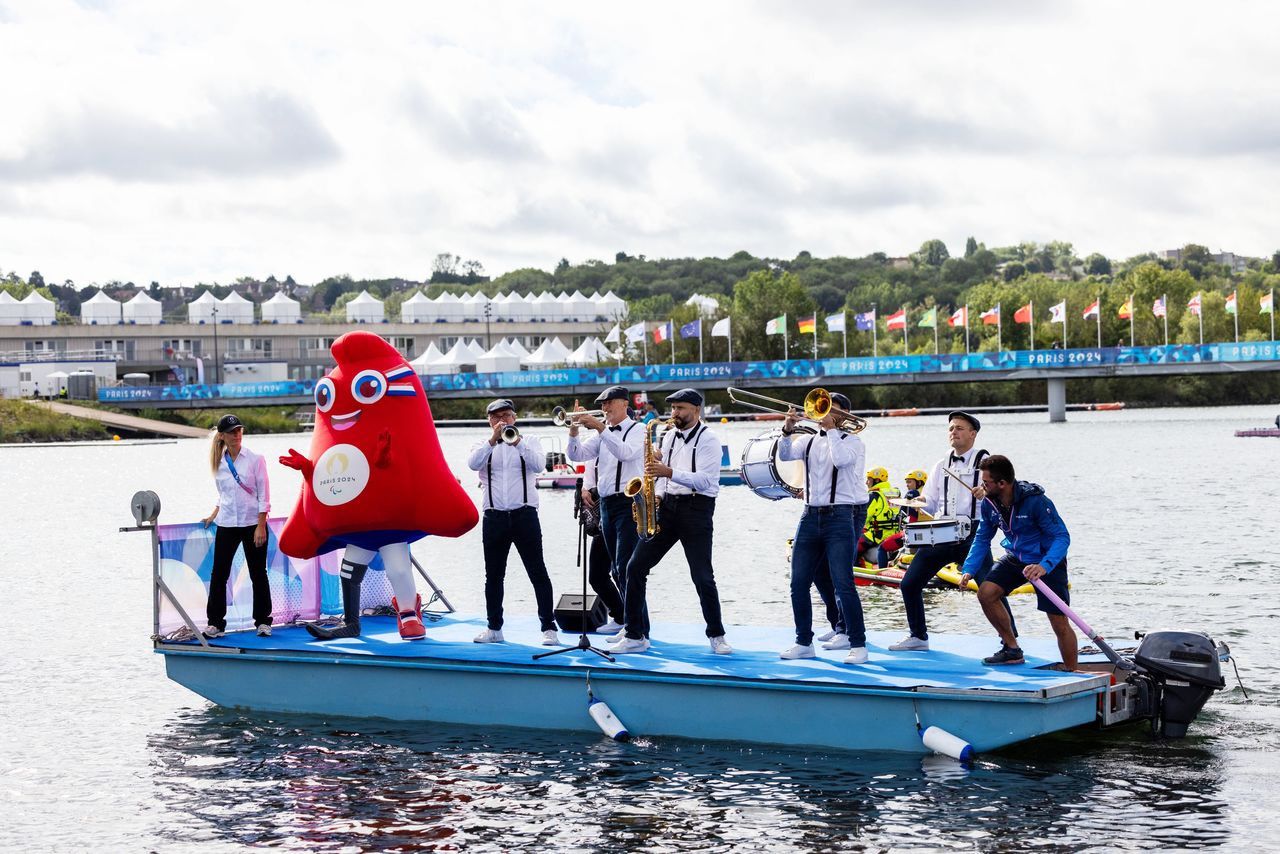
The Paralympic Phryge, mascot of the Games, galvanizing spectator excitement at the canoe competition venue. (© Ochi Takao)
The Paris Games had two Phryges (based on France’s traditional Phrygian cap) as mascots. The Paralympic Phryge had a prosthetic right leg. The motto of the two Phyrges was “Alone we go faster, but together we go further.”
It aptly expresses the pursuit of possibilities and challenges. I personally feel that my coverage of the Paralympic Games is also entering a new stage.
(Originally published in Japanese. Banner photo: Oda Tokito, winner of the men’s wheelchair tennis singles competition, lying on his back on the court in exhaustion and exhilaration, surrounded by the tracks left by his wheelchair at Roland Garros Stadium, Paris. © Ochi Takao.)
Related Tags
sports photography Olympics Paralympics 2024 Paris Olympics and Paralympics

